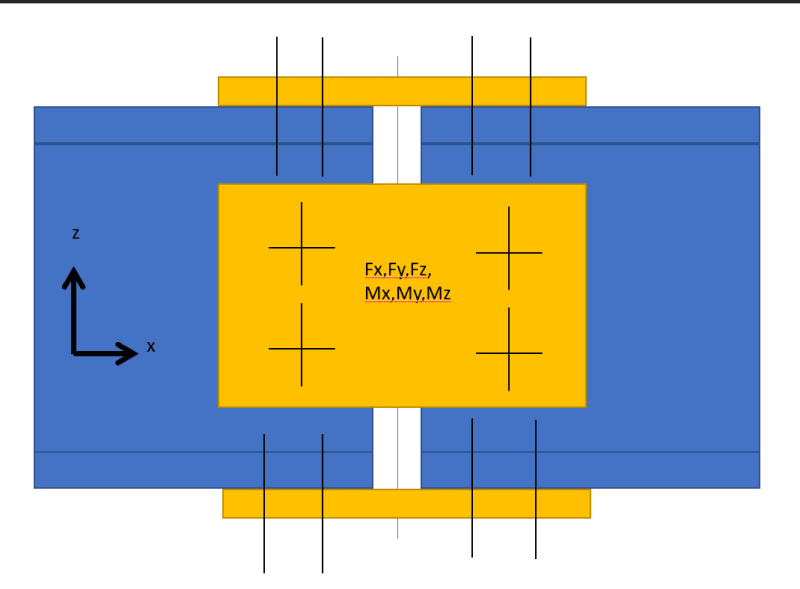Hi all
I have a longeron which is going to splitted and joined together with bolts like in the picture below.
i extracted the forces from gfem model. I have Fx, Fy, Fz and Mx, My, Mz.
My question is , how should i distrubute forces on bolts?
I think the forces along x direction acting as shear forces on the web and shear forces on the cap.
the forces alond z direction acting as shear forces on the web and tension forces on the caps.
the forces along y direction acting as shear forces on the cap and tension forces on the web.
MX acting shear on the cap and tension on web.
MY action shear on both web and caps.
MZ acting shear on caps and tension on web
Do you think my way correct?

I have a longeron which is going to splitted and joined together with bolts like in the picture below.
i extracted the forces from gfem model. I have Fx, Fy, Fz and Mx, My, Mz.
My question is , how should i distrubute forces on bolts?
I think the forces along x direction acting as shear forces on the web and shear forces on the cap.
the forces alond z direction acting as shear forces on the web and tension forces on the caps.
the forces along y direction acting as shear forces on the cap and tension forces on the web.
MX acting shear on the cap and tension on web.
MY action shear on both web and caps.
MZ acting shear on caps and tension on web
Do you think my way correct?

